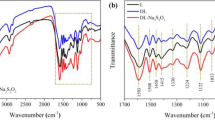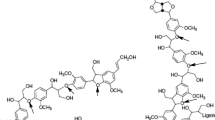Abstract.
The cell walls of woody plants are compounded materials made by in situ polymerization of a polyphenolic matrix (lignin) into a web of fibers (cellulose), a process that is catalysed by polyphenoloxidases (laccases) or peroxidases. The first attempt to transform the basic strategy of this natural process for use in human craftsmanship was the ancient lacquer method. The sap of the lacquer tree (Rhus verniciflua) contains large amounts of a phenol (urushiol), a polysaccharide and the enzyme laccase. This oil-in-water emulsion solidifies in the presence of oxygen. The Chinese began using this phenomenon for the production of highly creative artwork more than 6,000 years ago. It was the first example of an isolated enzyme being used as a catalyst to create an artificial plastic compound. In order to apply this process to the production of products on an industrial scale, an inexpensive phenol must be used, which is transferred by an enzyme to active radicals that react with different components to form a compounded material. At present, the following approaches have been studied: (1) In situ polymerization of lignin for the production of particle boards. Adhesive cure is based on the oxidative polymerization of lignin using phenoloxidases (laccase) as radical donors. This lignin-based bio-adhesive can be applied under conventional pressing conditions. The resulting particle boards meet German performance standards. By this process, 80% of the petrochemical binders in the wood-composite industry can be replaced by materials from renewable resources. (2) Enzymatic copolymerization of lignin and alkenes. In the presence of organic hydroperoxides, laccase catalyses the reaction between lignin and olefins. Detailed studies on the reaction between lignin and acrylate monomers showed that chemo-enzymatic copolymerization offers the possibility to produce defined lignin-acrylate copolymers. The system allows control of the molecular weights of the products in a way that has not been possible with chemical catalysts. This is a novel attempt to enzymatically induce grafting of polymeric side chains onto the lignin backbone, and it enables the utilization of lignin as part of new engineering materials. (3) Enzymatic activation of the middle-lamella lignin of wood fibers for the production of wood composites. The incubation of wood fibers with a phenol oxidizing enzyme results in oxidative activation of the lignin crust on the fiber surface. When such fibers are pressed together, boards are obtained which meet the German standards for medium-density fiber boards (MDF). The fibers are bound together in a way that comes close to that by which wood fibers are bound together in naturally grown wood. This process will, for the first time, yield wood composites that are produced solely from naturally grown products without any addition of resins.
Similar content being viewed by others
Author information
Authors and Affiliations
Additional information
Received revision: 4 December 2000
Electronic Publication
Rights and permissions
About this article
Cite this article
Hüttermann, .A., Mai, .C. & Kharazipour, .A. Modification of lignin for the production of new compounded materials. Appl Microbiol Biotechnol 55, 387–394 (2001). https://doi.org/10.1007/s002530000590
Received:
Accepted:
Issue Date:
DOI: https://doi.org/10.1007/s002530000590




